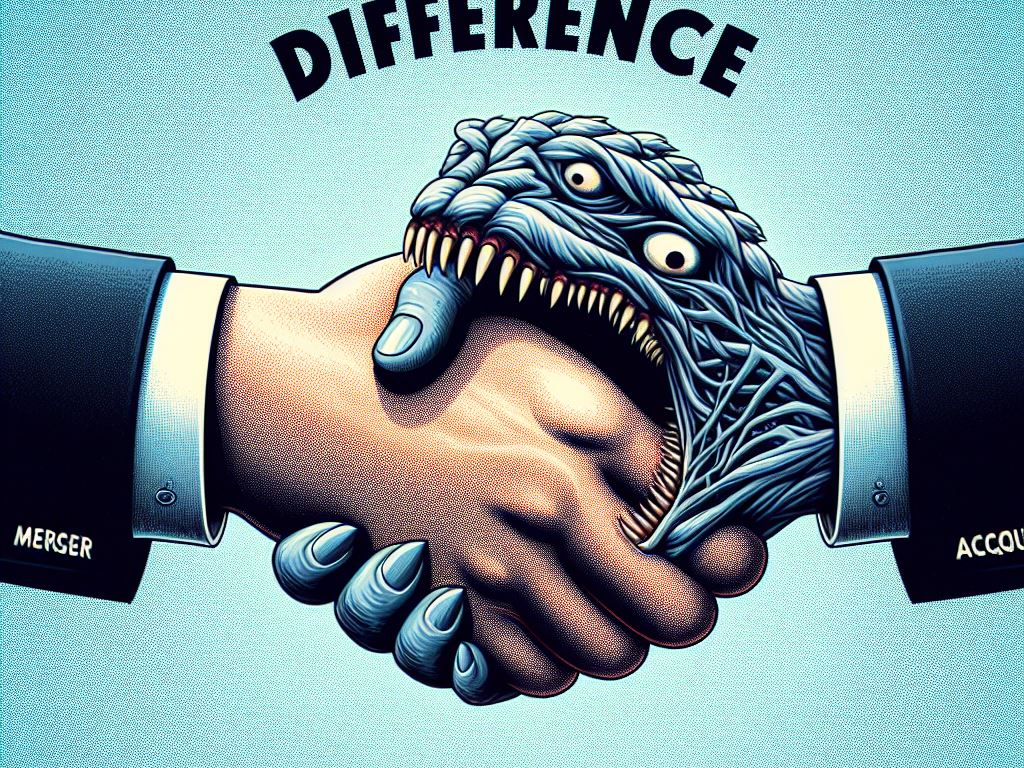“Mergers and Acquisitions(M&A) is consolidation of companies. Merger creates a new company, acquisition absorbs one company.”
What is Mergers
Merging is when two companies of similar size and strength decide to combine forces to become one entity. It’s like two puzzle pieces fitting together to create a bigger picture. If Company A and Company B merge, they become a single entity, leveraging each other’s strengths.
What is Acquisitions
Acquiring is when one company, usually bigger or stronger, buys another. It’s like one company taking another under its wing, sometimes to expand its reach or gain new skills. In other words, One entity buys over 51% shares, gaining control. For instance, if Company X acquires a majority stake in Company Y, Company X becomes the controlling entity.
What are the Reasons For Mergers and Acquisitions(M&A)
M&A results strategic advantages such as
- Employee Efficiency
- Growth
- Technological advancement
- Talent acquisition
- Compliance and Regulation
1. Employee Efficiency:
Mergers and acquisitions (M&A) help companies work more efficiently by bringing their teams together and getting rid of any duplicate tasks or jobs. This act reduces the cost of the company. For instance, merging human resources departments post-acquisition eliminates duplicate roles, enhancing efficiency.
2. Growth:
Through M&A, companies can rapidly expand their market presence by leveraging combined resources. For instance, a tech startup acquiring an established company can quickly scale up its operations and reach new markets.
3. Technological Advancement:
M&A facilitates the infusion of advanced technologies, enhancing innovation and competitiveness. For example, a pharmaceutical firm acquiring a biotech company gains access to cutting-edge research capabilities, boosting its product development pipeline.
4. Talent Acquisition:
M&A provides access to new talent pools and expertise, enhancing organizational capabilities. For instance, when an e-commerce giant acquires a tech startup, it gains access to a skilled and innovative team, strengthening its technological capabilities and market offerings.
5. Compliance and regulations:
M&A activities are governed by laws that define permissible reasons for consolidation. For example, mergers may be permitted if they foster healthy competition and benefit consumers by offering improved products or services at competitive prices.
You can also read about quantitative and qualitative analysis in investing
Key Differences Between Merger and Acquisitions (M&A)

Difference between Merger & Acquisitions
- Outcome:
Merger creates a new company, acquisition absorbs one company.
- Decision-Making:
Mergers are usually friendly agreements, while acquisitions can be hostile (unwanted) takeovers.
- Size and Power:
Mergers often involve companies of similar size, while acquisitions typically involve a larger acquirer and a smaller target.
- Shares:
Merged companies often issue new shares, while acquisitions might not.
Advantages of Mergers and Acquisitions(M&A):
1. Increased Competitiveness: Merging with another company strengthens your competitive edge. For instance, if Company M merges with Company N, they become a stronger force in the market, offering more products or services than before.
2. Economies of Scale: Combining forces helps achieve cost efficiencies (To reduce cost). Think of two airlines merging, which may lead to reduced operating costs per passenger due to shared resources and streamlined operations.
3. Increasing Profit: Acquiring another company can enhance profit margins by offering additional services to existing customers. For example, a software company acquiring another firm may sell complementary services to its customer base, boosting overall profits.
Disadvantages of Mergers and Acquisitions(M&A)
1. High Costs: M&A involves substantial financial investments. Legal fees, valuation costs, and restructuring expenses can add up, impacting the bottom line.
2. Stock Price Impacts: Ownership changes during M&A can affect stock prices. Shareholders may experience fluctuations, especially during the announcement and integration phases of a merger or acquisition.
3. Cultural Differences: Aligning organizational cultures can be challenging. For instance, a merger between a Silicon Valley startup and a traditional corporate entity might face cultural clashes due to differences in work styles and values.
4. Job Losses: Workforce reductions may occur due to role duplications. If two marketing departments merge, redundant roles may lead to job cuts, impacting employees’ livelihoods and morale.
Recent Merger and acquisition (M&A)
Recent merger and acquisition (M&A) in India
1. Government of India and Vodafone. In February 2023, the Government of India acquired the largest share in Vodafone-Idea (Vi), holding 33.4% of shares in the company1. The deal amounted to around Rs. 16,133 crores.
2. Axis Bank and Citi Bank. Axis Bank merged with Citi Bank in a deal worth Rs.11,603 crore.
3. Brookfield Asset Management and Rostrum Realty Pvt. Ltd. Brookfield Asset Management acquired Rostrum Realty Pvt. Ltd for Rs.5000 crore.
4. Kotak Mahindra Bank and Sonata Finance. Kotak Mahindra Bank merged with Sonata Finance in a deal worth Rs.537 crore.
5. BSE (Bombay Stock Exchange) and CDSL (Central Depository Services Limited). BSE acquired CDSL for Rs.468 crore.
Recent Mergers and Acquisitions (M&A) in the World
1. UnitedHealth and LHC Group Inc. UnitedHealth Group, an insurance provider that also provides healthcare services, acquired LHC Group. The value of the deal was $6 billion.
2. CVS Health Co. and Signify Health Inc. CVS Health, a well-known distributor of pharmaceuticals, acquired Signify Health, a leader in health risk assessments, value-based care, and provider enablement. The value of the deal was $8 billion.
3. L3Harris and Aerojet Rocketdyne L3Harris Technologies acquired Aerojet Rocketdyne, a company in the aerospace industry. The value of the deal was $4.7 billion.
4. Amgen and Horizon Therapeutics. Amgen, a biopharmaceutical company, acquired Horizon Therapeutics, a company that focuses on treatments for rare, autoimmune diseases. The value of the deal was $26.4 billion.



Pingback: Best Budgeting Apps for May - Finspace360